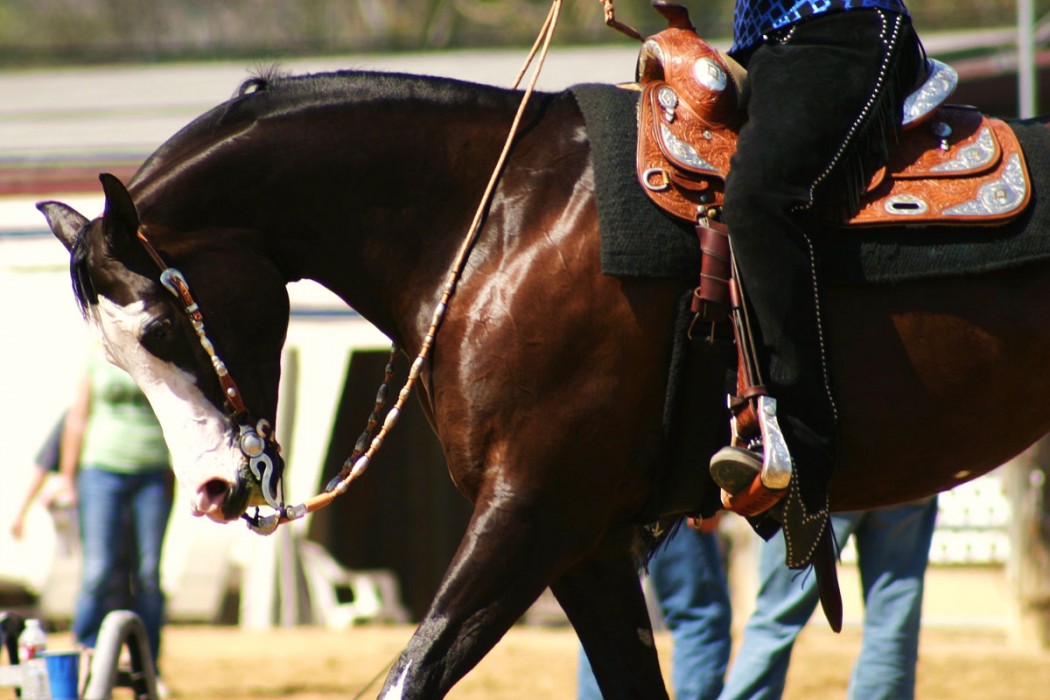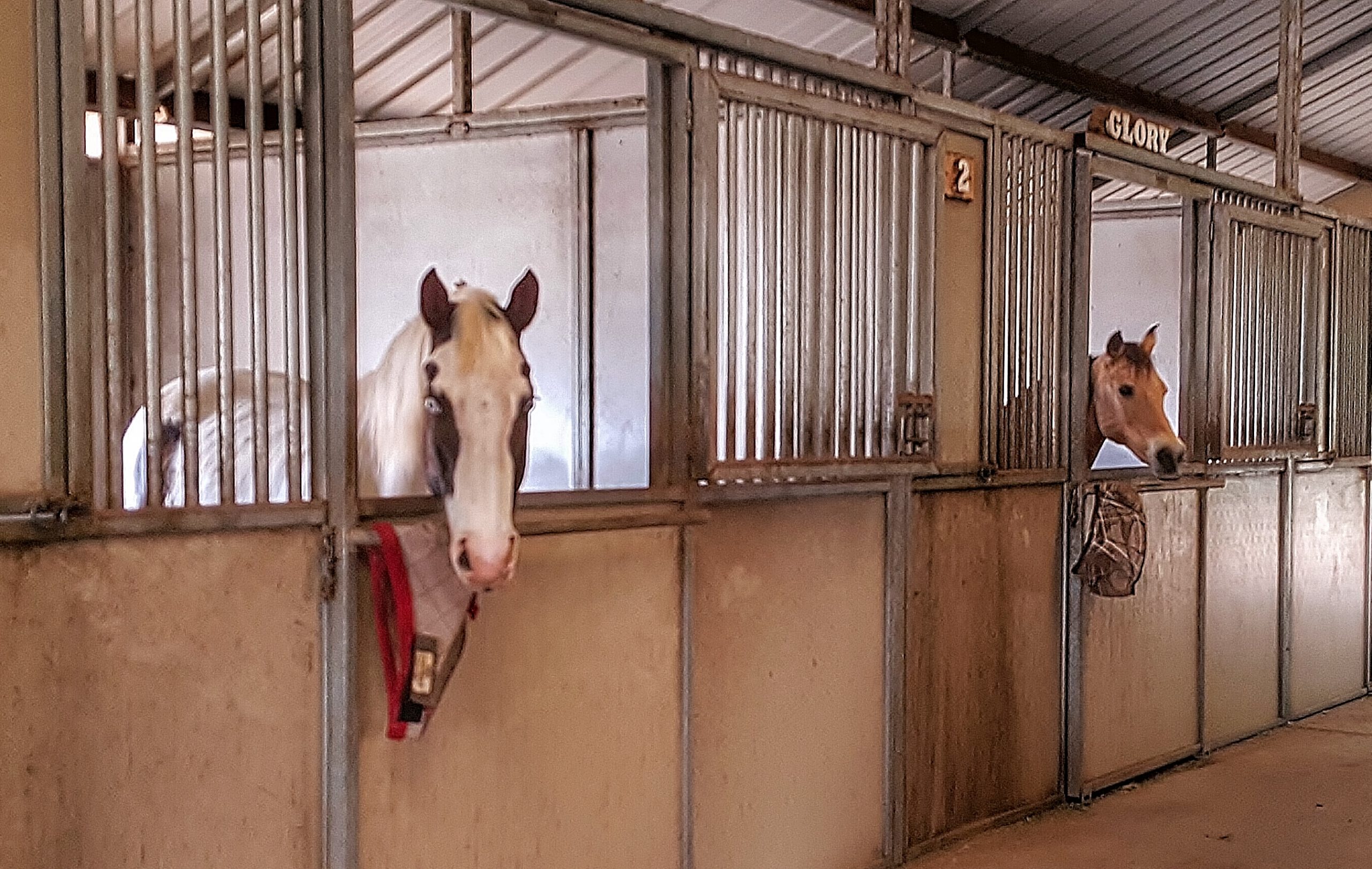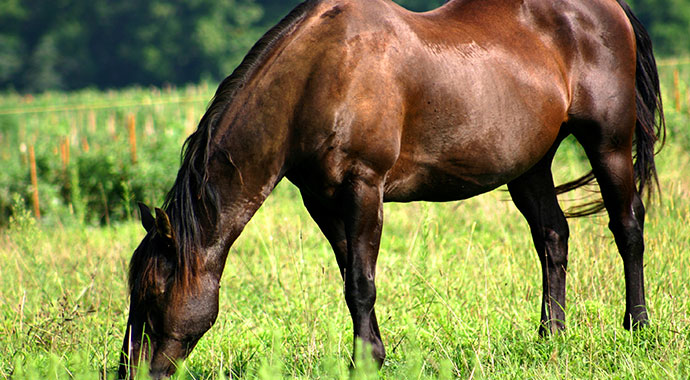Today I had an interesting experience at the barn that brought my mind around to thinking about how we, as owners, can better learn to understand and communicate with our horses.
When it comes to communicating with a horse, we have to learn how to speak their language, and we also must teach them how to speak our language.
Universal Communication Principals
Imagine two people who can’t understand one another meeting up in the street; something important must be expressed, but words just won’t work. What do you do? You use gestures and universal “body language” in order to get your point across, and eventually things begin to get a little clearer. Certain gestures are obvious – a person throws his or her arms up in the air and grimaces; we might infer that the person is angry or excited. If that person rounds his shoulders, bows his head and turns away, we may infer that the person is afraid, sad or worried. It’s the same with horses; each gesture that we do means something to them, and each movement that they make should mean something to us. This leads me to my experience earlier today at the barn.
Horse Communication Failure
One of the newer boarders (who I haven’t had very much interaction with, but know is a relatively new horse owner) was attempting to get her mare into the wash rack. I watched as she walked her mare up to the concrete and pulled on the lead, and I watched as the mare pulled against her and backed away. This went on for a while – owner directly in front of the horse, pulling, and horse backing away with wide eyes – until eventually the tug of war ended with the horse completely braced and standing still and the woman out of breath. She looked over at me and said, “This horse just doesn’t get it. They told me she was trained.”. The fact was that neither the horse nor the owner “got it” and it had nothing to do with how “trained” the horse was…they were fighting against one another and speaking a completely different language.
Applying the Art of Pressure and Timing
This is when I asked if I could help for a moment. I went over to the mare and took the lead and walked her away from the wash rack. We walked back and forth for a few moments, stopping occasionally, turning here and there, backing up, etc., until I was confident that the mare understood how to move off of pressure. So, that wasn’t the problem, the problem was that the mare was genuinely apprehensive about the wash rack. Next I moved the mare back toward the concrete, and I could feel her start to slow and brace against me, so I stopped her before she stopped on her own. We stood there for a moment – in her comfort zone – until I felt she was ready to move forward. I asked for a step forward and the mare obliged, so I released the pressure and she stood still. I asked for another step forward and the mare backed away, so I backed away with her and kept her moving backwards until I asked her to stop; I then immediately asked her to move forward again up to the point that she was before and asked her to stop again.
This went on for a while – back and forth, inching forward – until eventually I got the mare to step up on the concrete. This is where I allowed her to stand for a moment and breathe. She was thinking and she was watching me the entire time. I didn’t ask for more than she could handle, and she didn’t resist. Within a few minutes, the mare had all four legs on the concrete. I walked her off the concrete and away from the wash rack and then came back to it again, this time, while still hesitant, she didn’t resist and slowly stepped up to where I wanted her to be. A few more times and she was standing quietly where I wanted her to be.
The “Magic” of Proper Communication
“Wow, that was like magic,” the owner said. I explained that it wasn’t magic, it was just learning the language of the horse and the “art of pressure and timing”. We can’t expect that our horses are always going to be comfortable with everything that we do, and the worst thing that we can do is get into a fight with them, because, let’s face it, 1000 pounds overpowers 150 pounds every time. The technique that I used is one that has been around for ages – I learned it when I was a youngster – and I’ve used it to get hesitant horses into horse trailers, across obstacles, and through all matter of “scary” situations.
So, the next time that your horse balks at something, resist the urge to “pull”, “push” or apply too much pressure. Instead, stop and think about the situation and take things slowly. Understand that 90% of the time, a horse resists doing something because he is either afraid or uncomfortable with it, and it’s up to you to “communicate” two things: 1. That everything will be okay, and 2. That you understand his fear or hesitancy and will work through it with him. Apply pressure, but also remember to allow for release; this is where timing comes into play, because you must release while your horse is doing what you ask of him. Keep the dance going until eventually you’re moving in time with one another. Learn the language of your horse; read his body and allow him to read yours.




